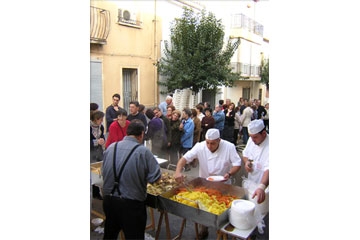Ingredients
Various types of meats (beef, lamb, chicken, hen, pork, pigeon if any and a good ham bone), chickpeas, potatoes, carrot, parsnip, turnip, napicol, cabbage, leek, thistles (‘penques del nuguet’ the best), celery, sweet potato and … if you have winter ‘perots’, the symphony of flavors will be complete.
Preparation
It is the local variant of one of the most popular dishes in Spain: the stew, which in each region has special characteristics. It is the ‘rotten pot’ (from ‘powerful’ or ‘powerful’) from old Castilian that Cervantes already refers to in his Don Quixote, putting in Sancho’s mouth that of “we will take a rotten pot because in having so many vegetables in it, some will have to be please “.
- The chickpeas are soaked the night before and they can be cooked separately in cold water, without breaking the boil.
In the largest pot you have, cook the veal, lamb (preferably garreta) and pork (bones, trotters, tail … and a good piece of bacon, if it can be ‘salty’, the better) ; reserve for later the chicken that cooks faster. Add the vegetables (except the potato that requires less time) and reserve the kale or cabbage, the outer leaves, for the ‘pilota’. - When the meats and vegetables are cooked, add the potatoes (one per person), some meat or onion black pudding and the ‘balls’ and allow to finish cooking. It is corrected with salt and a few strands of saffron or coloring are added.
- The broth is drained and with it some noodles are cooked as the first soup course and the ‘stew’ is arranged in dishes separating the meats, vegetables, potatoes, thistles and balls so that each one is served according to your wishes. Ah! And don’t forget to mash the potato with a piece of bacon because, even though it’s dirty and frowned upon, they say it’s… the best.
- From the broth (which will surely be left over if the pot is large) you can make a baked rice the next day that will taste like … pure glory. Or, if you prefer, a ‘sequito’ rice in a ‘paella’, sautéing some garlic and a little tomato, which will be … to die for!
Balls:
- They are prepared separately by boiling the cabbage leaves to be able to wrap them. The dough is made with fowl giblets, chicken blood, bacon bits, soaked and drained bread, a couple of eggs, pine nuts, salt and pepper to taste or another spice to suit the cook. Knead well and form balls that are wrapped with cabbage leaf and tied with kitchen string. To cook them they are deposited in the pot at the end of cooking).


